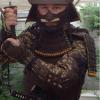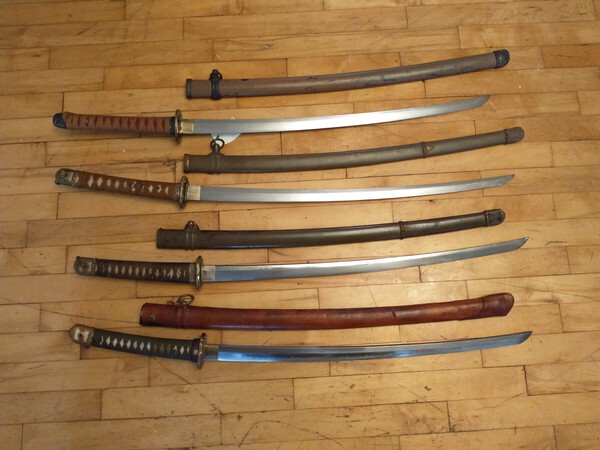Leaderboard
Popular Content
Showing content with the highest reputation on 01/05/2022 in all areas
-
I agree with almost all of the comments above and you have some great advice there. My personal observations are: - often people submit and re-submit (if they can afford it and is feasible) until they are happy with the outcome - this could entail multiple submissions to the same or both organisations - sometimes, the judgements are different but they tend to be within the same broad period (eg late Kamakura or late Koto or something Muromachi or a specific era within Shinto, etc) and within the same broad level of skill (eg, very rarely a 'second' tier smith or school will be interpreted to be a 'top' tier master; also, extremely rarely are there any disagreements as to whether something is pristine Koto or ShinShinto) In my case, I have had a sword that a previous owner had passed through the NBTHK and NTHK. The NTHK agreed with its Oei Bizen designation and issued the papers. But the NBTHK disagreed with the mei and pronounced it gimei. The previous owner had the mei removed and nakago repatinated. The sword then passed through NBTHK as Ichimonji with flying colours. Also, Tanobe sensei when he saw it commented it was a typical Yoshioka Ichimonji. So, in some ways, the gimei was bringing it down to an extent. The NBTHK seems to be more commercially recognised and in Japan dealers prefer their papers. At levels below Juyo, the turnaround is actually 3-4 months (not 6) and one gets the judgment / result in a slip reasonably quickly after shinsa. The actual certificate takes another two months or so. As to this blade, could we actually see some more of the blade? As pointed above, Tomomitsu is a reasonably big Koto name and it will be interesting to see this example. Thank you.8 points
-
Hi my dear friends, First of all, I want to express my most sincere wishes and a Happy New Year to you all and your families. I know this should be in another section so Brian, please feel free to move it if you feel like it, but I posted it here because some members have contacted me and I want to reach most of them. Not sure they all go to the Izakaya. Then I guess I owe you guys an explanation and an apology for my silence those past few months. I’ve wanted to do that for quite some time but it isn’t always easy to expose your issues in front of everyone, and I know some of you may find those issues triffle or first world problems. Anyway, here’s what has happened to me since my absence. First of all, let me tell you that I’m an animal lover… maybe a little too much ! For years, I have been doing the job of a shelter for distressed cats without help or financing. At some point, I had more than 30 cats. Costly and tiring. That’s roughly three hours of work in addition to my full time job everyday. Those animals I recover are usually starving, some of them sick, all of them scared by very difficult beginnings. I’m used to have animals that don’t live long because of that. I loose some every year. Everytime, its a tragedy for me but I’ve developped some endurance to it. This year was special. I lost ten of them in a row over the space of two months. Causes of death were different but I think that the last straw was probably the last one who was litteraly and voluntarily crushed to pulp by a car and the driver purposefully drove over him with both wheels. I know it as I saw it happen. I guess it taxed me a lot and I entered some kind of a breakdown. I was starting to recover, in September, when the secong blow came. Now, here’s the second part of my life. Ten years ago, my elderly mother suffered a stroke that left her with paralysis on her left side. My father had a hard life working in construction and carrying loads so his back is ruined and he has to use a walker. Being an only child, I took them both in and care for them. Not a light job either, but one I feel I have a duty to accomplish. So, come September, my father has to be hospitalized because he had fallen in the middle of the night. His blood count was well below normal. Diagnosis : Mielodisplastic syndrome. To sum up, a bone marrow cancer that will turn into fatal leukemla in generally something like two years. That was the fatal and final blow to me. Now it’s been three months since that diagnosis and I am starting to digest it and recover. My father is responding to treatment and so far, he is neither better nor worse. There you have it ! All tis has made me depressed and apathetic, with no real interest for anything and some sort of self pitying. So I am sorry and apologize to all those who’ve contacted me and to whom I haven’t replied, I will reply to each and everyone of you. Please just give me some time as things have accumulated and I have some catching up to do. Know that I am feeling better and will do my best to stay around. Best wishes to you all, JP6 points
-
Hi John, A paper from the NBTHK usually carries more weight than one from other organizations, both here in the west and in Japan. If you are buying the sword from a dealer in Japan, you have to figure that he knows this as well as anyone does, and that he may have submitted the blade to the NBTHK (why wouldn't he; he's there) and received an answer he liked less than the one he got from the NTHK-NPO. I can't say for sure that this is what happened, maybe he was satisfied with the NPO paper or maybe it is a consigned sword and the owner didn't want a new paper or who knows why, but it is a possibility. You might ask the dealer if it has been submitted to the NBTHK and if not would he be willing to do that to clinch the sale. Might be interesting to see his answer. Grey5 points
-
These are two different Kunitsugu smiths. The one on your blade is supposed to be Yamada-seki Kunitsugu (also called "Min" Kunitsugu because of the way he signed his name). The one in the picture above is Uda Kunitsugu, who also used a very distinctive kanji style in his inscription. In saying that, yours really doesn't look like Min Kunitsugu. Yours has a pretty orthodox inscription of the 國 (kuni) kanji, whereas Min Kunitsugu used a distinctive and unique style of 國. The name Kunitsugu is used by a lot of different smiths. Maybe over 30 smiths used this name, so pinning your sword down to a specific smith might be difficult. You kind of have to use a process of elimination to determine what the sword is not, and then work from there.3 points
-
3 points
-
3 points
-
Perhaps less obvious is the change in appearance of a blade. When newly made and given its first polish, the smith would examine it for defects before passing it to its first owner. What they saw would be lost after the next polish which cut away the original surface. Subsequent polishes would gradually reveal what had initially been the interior of the blade. In other words when we gaze in admiration at the activity in a koto blade, it is a bit sobering to think that we, and the last polisher, are the only people who have seen that incarnation of the blade that probably differs considerably from what its maker saw. Ian Bottomley3 points
-
2 points
-
You can also ditch going towards Sudo Kunitsugu route even though was suggested for researching in original sales ad as he wrote Kuni is very peculiar and original way.2 points
-
I read somewhere that really fine webs between the sukashi elements of a Tosho or Katchushi style tsuba, is a sign that it was done in the Edo period, rather than pre-Edo. I forget where I read that though... Also, that shape and the boar eyes don't show up in tosho or katchushi guards, so it suggests it was made later, but "in the style of" the earlier Tosho & Katchushi guards. I have seen multiple examples of NBTHK papered Katchushi tsuba without the raised mimi that they typically have... making things a little more difficult to distinguish between Tosho and Katchushi styles. Regardless, Haynes has put forward the idea that we should classify both the "Tosho" and "Katchushi" style tsuba as TANKO (metalworkers) tsuba because neither of these styles can actually be proved to be made exclusively by either swordsmiths (tosho) or armoursmiths (katchushi). So "Tosho" and "Katchushi" are merely labels of convenience and not proper classification labels. Here are some examples of what you typically see with their fan motifs: Tosho: Katchushi:2 points
-
2 points
-
I think the attribution on the papers is accurate, though ‘Edo-Umetada’ may be more precise. The signature style of the Edo branch of the Umetada was thick gilding in surihagashi [摺り剝がし] (polished to reveal the base metal on the protruding points) which was commonly done on shibuichi to replicate yamagane and create an antique appearance, which can be considered to be reminiscent of ‘Ezo’ tosogu.2 points
-
I want to say a special Thanks to Don. He was able to send me 3 screws that were missing from my sword and they fit perfectly! Much Appreciated Don and also Tom! CS2 points
-
Hello all happy new year. Im from the UK and a JSA practitioner for 10 years. I studied kendo, iaido and niten ich ryu form of kenjutsu (koryu). I was a member of the BKA British kendo association and stopped practicing due to work and study. I completed a masters degree in Japanese studies in 2018. And have been collecting replica production swords since 2007. I finally purchased my first nihonto this week, after saving up and almost 14 years of trying to avoid this dream of mine because of expense lol. But thanks to covid it left me with some income due to no holidays for 2 years. Saying how excited I am to receive my first nihonto ( koto, late muromachi period) is an understatement. Take care all.2 points
-
Yes, that is him. I just purchased a Rin Tomimitsu (zaimei) as well. He was an excellent and important smith. My opinion, Tanobe + NBTHK is the way to go to have this one evaluated...2 points
-
George and Bruce, interesting questions, the mei does seem to be Kaneyoshi, but that is unusual "yoshi" 賀 and also read "ga" or "ka" . Its also in the province name of Kaga 加賀. Maybe a coincidence but this blade looks very much like Kaga (Kashu 加州) work of Kanewaka school who came from Mino, but around 3rd gen e.g. early 1700's. (some of them also then went to Owari). Note the nakago which looks ubu, has yasurime (taka no ha) and jiri (kata-yamagata), but also the hamon looks like irregular gunome midare with various small choji (flashy styles popular at that time). But I cant find a record of such a smith. Here's a later wild card: Mino no Kami Fujiwara Toshinori (1740-1810) real name was Hamabe Gonzaemon, his initial mei was this Kaneyoshi, he move to Inaba (Tottori) and when he received a title in 1785 (Mino no Kami) changed his mei to Toshinori. Early he also did hamon with narrow irregular choji. This may be way off, but it is an interesting story!2 points
-
Hi Grey, Many thanks for your reply. They are happy to submit it to the NBTHK if I want but I believe they have used the NTHK because the turnaround is much quicker. Submitted in December and papers in January which means they can sell it faster. I have been told the NBTHK papers take over 6 months to turn around. After speaking to Mark and gaining a better understanding of what the papers mean, I have decided that if I proceed with it then I will get them to submit it to the NBTHK while it is in Tokyo. As you say, it's there and can be easily done so it makes sense and I don't mind waiting. Thanks for the replies. Kind regards, John2 points
-
OK, two more from 2021... I promise I won't post any more 24- A san-mai tsuba with reddish-copper tones coming through on the high points of the surfaces, and an iron core. I can see the iron core in the round punch mark at the top left of the nakago-ana, and tested the tsuba with a magnet. You can also see a seam line running along the midline of the hitsu-ana, and more faintly in the nakago-ana. I can't see a seam anywhere along the mimi. Does anyone have any thoughts as to what school may have produced this? 25- A Bushu Ito tsuba with carved branches covered in blossoms with four boar eye sukashi. The center of each blossom has a gold dot accent.2 points
-
1 point
-
Thank you Jean and Glen. Definitivly an edo tsuba for sure and probably a tribute to armourer Smith. Thank you for your interest.1 point
-
This is a good mei to learn because there were many generations who used the exact same mei, plus there are still a lot of good, healthy swords from this group, so if you can learn to read it (the first two kanji are quite distinct) you will be able to recognize it on many swords. Just looking at some other examples on the internet, I can see the 4th and 5th generation inscribed 守 with a fairly vertical stroke, so it's good not to shut the doors too tightly on any possibility. With a Yoshimichi blade, the hamon should be very distinct, and will be an excellent indicator of authenticity.1 point
-
You're very welcome Carson. Don is a true gentleman and has helped me out in the past. Tom1 point
-
Bruno, as you may know, there is no KACHUSHI school. The term refers to TSUBA made originally by armour smiths (so far the theory). In later times the stylistic elements were used for a fashion. The same applies to TOSHO TSUBA - not a school, but a style. Many see a thicker MIMI (ORIKAESHI or DOTE) as an indication to KACHUSHI, others the minimal thickness, and again others the size and number of the SUKASHI. I would see your TSUBA as an early EDO JIDAI item with stylistic hints to KACHUSHI, but I don't think it is a KO-KACHUSHI TSUBA.1 point
-
1 point
-
For looks? Guardian to the viewer and tip downwards, maybe even place the whole thing at an angle that you don't look flat at the guard. For stability and practicability, as DTM72 already said, maybe the D-Guarf towards the kake itself for balance. Best regards1 point
-
1 point
-
I don't think the flat saya tip would stay very well in the indentation of the base...plus it may be top heavy. I would think D-Handle down would fit and work better. Or...get a mounted tachi...1 point
-
There were some yari discussed on NMB with such red coloring. Here's one:1 point
-
I think Bruce has it very good chance of broken blade made into a walkie1 point
-
Hello Bruce, I remember this topic from the past......I talked to a veteran many years ago who painted his nco gunto silver ,luckily his son managed to get off with acetone without damaging the remaining paint...I know have the sword......also, many years ago I turned down a white painted copper hilt nco only to find out it was 100% and probably painted for winter use... Regards, Paul.1 point
-
When I first saw them Ezo was exactly my thought but the paper says otherwise. I think these fall into a grey area.🤔 Mark1 point
-
1 point
-
Everything about this sword . other than the mei which is well cut and looks old , points to this being a showa or gendai blade . Ian brooks1 point
-
David, dont know what the blue ito is, but at kashira looks to be Japanese paper under it. However, the yellow ito looks like an amateur Western job, as the ito crossovers are all the same way (dont alternate left, right, left etc). Did this have menuki?1 point
-
1 point
-
1 point
-
The original post was on this Sword Forum International thread but he didn't know the context. I thought I had a copy of the actual book page, but cannot find it for the moment. If memory serves me, it was the coronation of the Showa emperor in 1926, and the observer reported "a large gathering of Japanese with silver blades held high and gold sheaths glistening in the sun . sure it was rallying for a final last stand.."1 point
-
1 point
-
Mantetsu Serial Number Ranges 1937 昭和丁丑 None reported. 1938 昭和戊寅 C-17 to C-30. [2 reported] H-14 to H-20. [2 reported] N-1 to N-408. [10 reported] Subtotal: Approximately 480 blades a year or 40 per month. 1939 昭和己卯 N-?? to N-574. [1 reported] V-18 to V-33. [2 reported] W-23 to W-38. [2 reported] 1st Series: イ-376 to I-466. 2nd Series: ロ-75 to RO-270. 3rd Series: ハ-?? to HA-24. 4th Series: ニ-57 to NI-679. 5th Series: ホ-123 to HO-125. Subtotal: 1,800 yearly or 150 monthly. 1940 昭和庚辰 5th Series: ホ-538 to HO-546. 6th Series: ヘ None reported. 7th Series: と-41 to to-729. 8th Series: チ-61 to CHI-356. 9th Series: リ-108 to RI-560. 10th Series: ヌ-182 to NU-608. 11th Series: ル-16 to RU-199. 12th Series: ヲ None reported. Subtotal: 2,400 yearly or 200 monthly.1 point
-
What's going on with the disgusting trypophobia themed horimono?1 point
-
I've taken some more photo's as best I can. There is a round stamp at the top of the tang, which I can not make anything out. I know I shouldn't try to clean it to try an get a clearer image, but is there anything I can do to be able to see what this stamp is (maybe talc powder or something similar) Regards Matt1 point
-
This appears to be a WWII era blade in type 3 koshirae signed Kaneyoshi. http://ohmura-study.net/952.html1 point
-
1 point
-
Howdy I'm Tim from Melbourne Aus. I'm new to the world of Nihonto but fairly familiar with the world of swords having done HEMA( historical European Martial Arts) a little while ago. I just ordered my first few books on swords to pour over, and I'm excited to try and glean as much knowledge as I can from all of you before dipping my toe in the deep end and acquiring my first sword!. Apart from Nihonto I also have a passion for beer ( in particular the science and production of it) I also love old Volkswagens , which makes Nihonto collecting seem relatively cheap by comparisons Cheers Tim N1 point
-
I am a 54 year old surgeon in Michigan. I have been thrust into the world of Nihonto from the death of my parents from Covid. When I was a young child, a family friend list his business and was down on his luck. My parents let him stay in out house until he was able to get back on his feet. As a thank you, he gave then 2 Nihonto that he brought back from WW2. I was fascinated by these as a young child and would want to play with them all of the time. Luckily my father warned me about never touching the blade. They have spent the last 45 years sitting in a closet in the guest bed room. When my parents passed last October, they were the first things that I told my sister that I would like to keep. Now I have become obsessed with getting as much information about the older one of the 2. I am ignorant about Nihonto but eager to learn. I would like to find out as much information as I can about the sword and the smith that made it. I have much to learn but look forward to the journey.1 point
-
Hi all just a quick hello to say i am new here and looking forward to learn a bit on Japanese swords and culture , always found very interesting and fascinating as i am familiar with basic metallurgy and blade making although i don't have much time to practice as much as I want too also if there is other member here from BC Canada that would interesting to share some infos regards Michael1 point




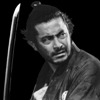





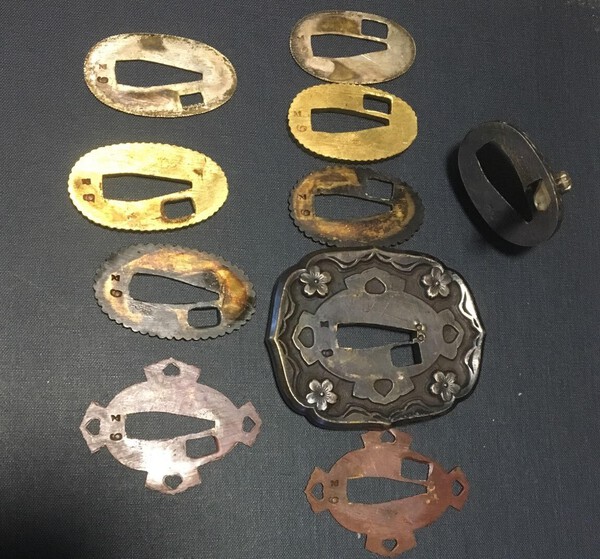



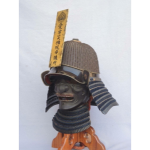
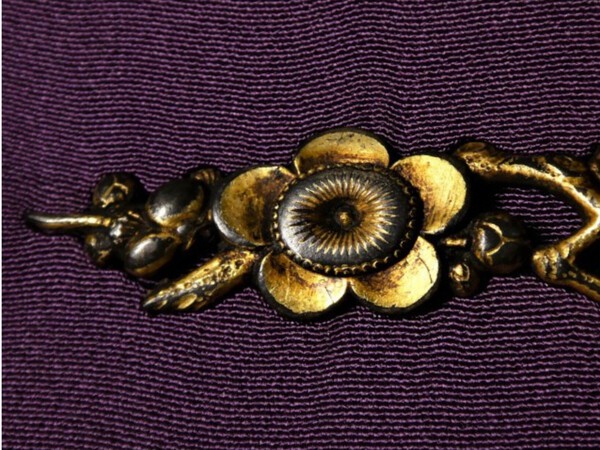
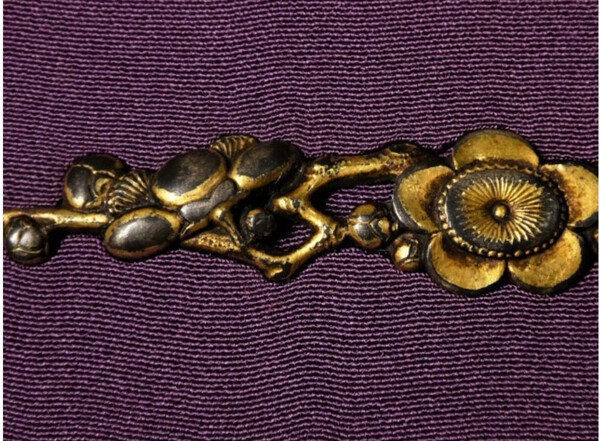
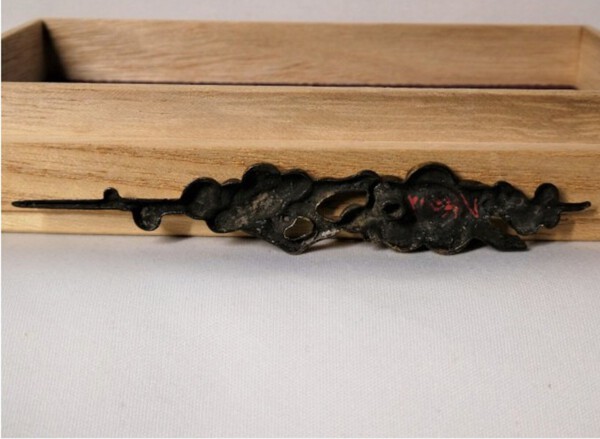
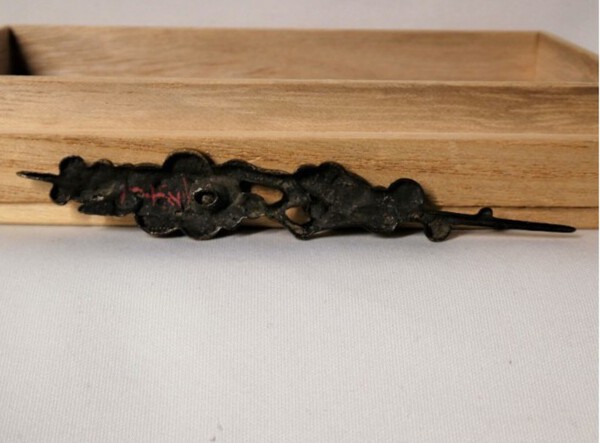
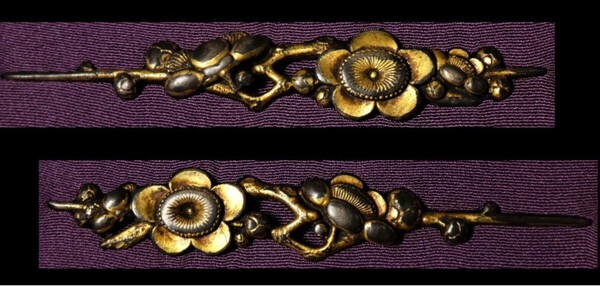

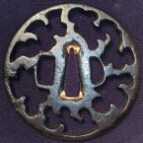
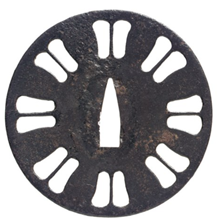
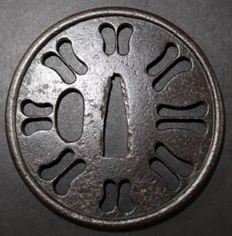
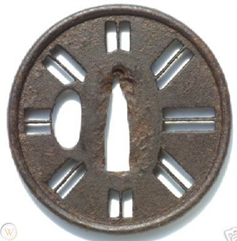

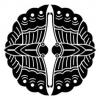


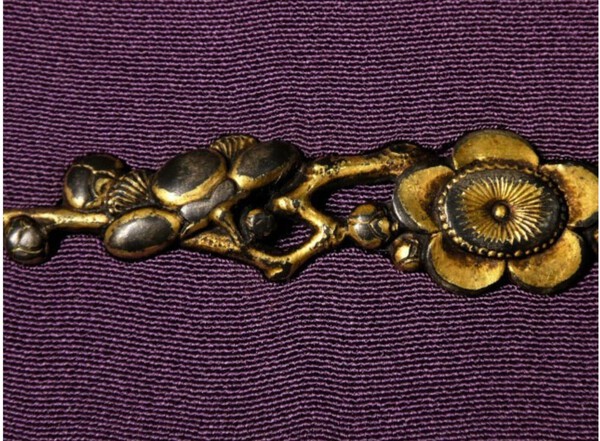
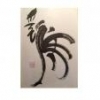
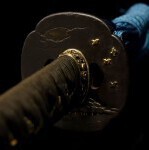



.thumb.jpg.48f4fa439f51bf9135797dc19f9d7a3d.jpg)



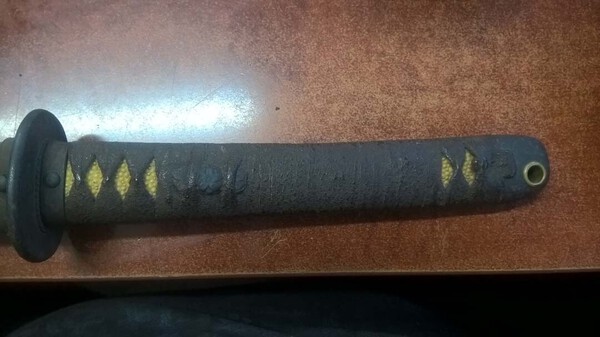







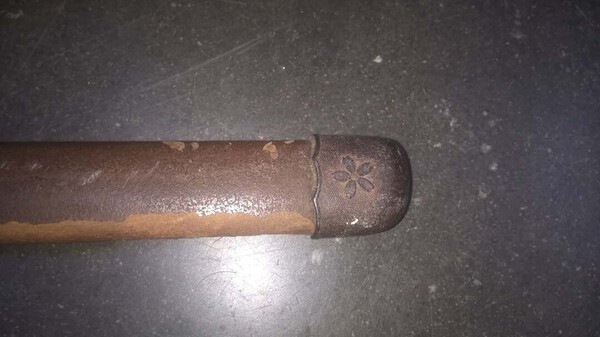


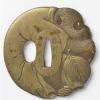







.thumb.jpg.bc10b59027a00aa142dce0349f3ba9e0.jpg)



